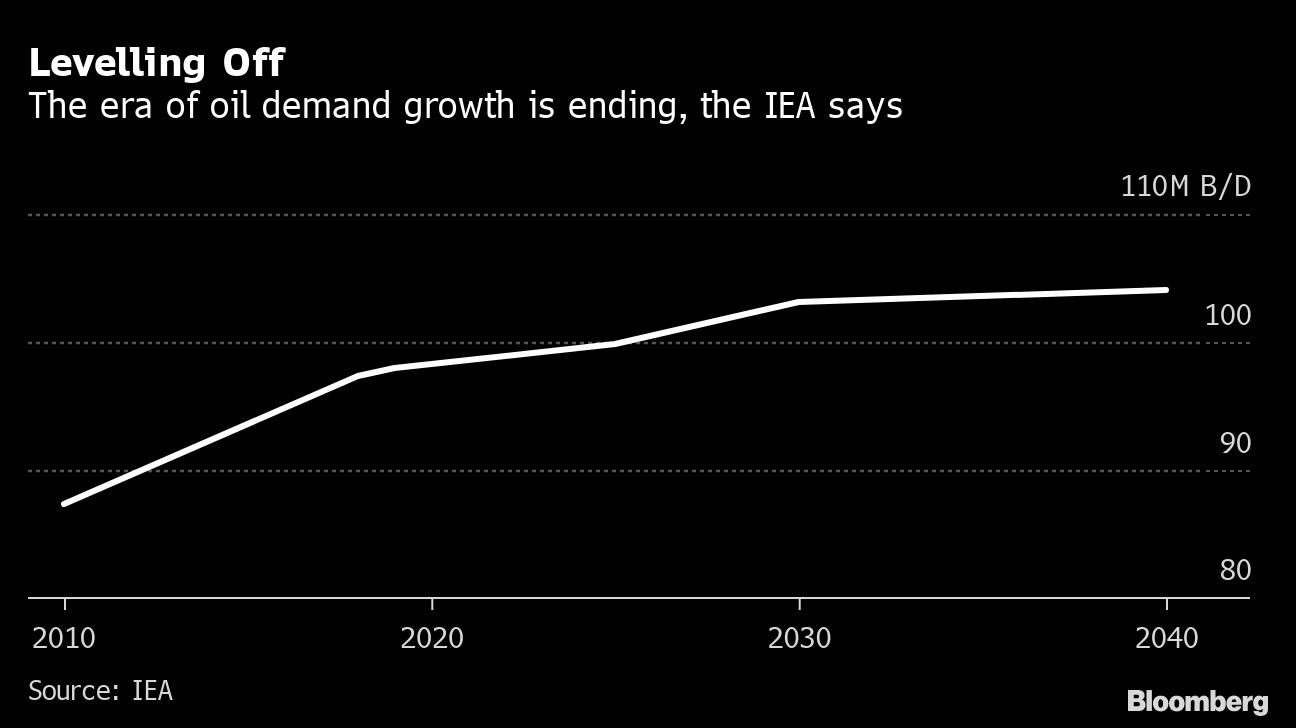In its latest annual World Energy Outlook report, the International Energy Association (IEA) reiterates its forecast that global oil demand will plateau over the next decade and at lower levels than they forecast last year. Here is their chart courtesy of Bloomberg.
 Each week pensions, banks and other institutions announce that they will no longer make new investments or loans in the oil and gas sector (see last week’s JP Morgan promises to shift portfolio away from fossil fuels) and oil majors like BP and Royal Dutch Shell have acknowledged that drastic changes required to reduce climate crisis will have profound consequences for their assets and business models. See IEA sees oil demand suffering long-lasting blow:
Each week pensions, banks and other institutions announce that they will no longer make new investments or loans in the oil and gas sector (see last week’s JP Morgan promises to shift portfolio away from fossil fuels) and oil majors like BP and Royal Dutch Shell have acknowledged that drastic changes required to reduce climate crisis will have profound consequences for their assets and business models. See IEA sees oil demand suffering long-lasting blow:
Long-term growth in oil demand will be tamed by the switch to more efficient or electric vehicles, the IEA forecast. Consumption will increase by about 750,000 barrels a day each year to reach 103.2 million a day in 2030. That’s about 2 million a day less than predicted in last year’s report.
The increase will be entirely concentrated in developing nations — most notably India — and dominated by feedstocks for plastics and other petrochemicals, rather than fuel for road transportation. After 2030, annual growth will dwindle to just 100,000 barrels a day.
This is a raging heads up for oil producers globally (including Canada):
OPEC members also face a difficult period as depleted revenues strain national budgets, and a chunk of growth that had been anticipated from Nigeria, Iraq and Angola is now expected to be lost.
Canada must transition oil investment and employment to the critical components needed for batteries and renewable electricity and infrastructure without further delay. The segment below discusses a new study out of the University of Toronto on the accelerating shift to electric vehicles. “Once you go electric, you’ll never go back.” True that.
Alexandre Milovanoff, a University of Toronto researcher says full electrification of vehicles is needed to meet aggressive climate targets set in the Paris agreement. Here is a direct video link.


